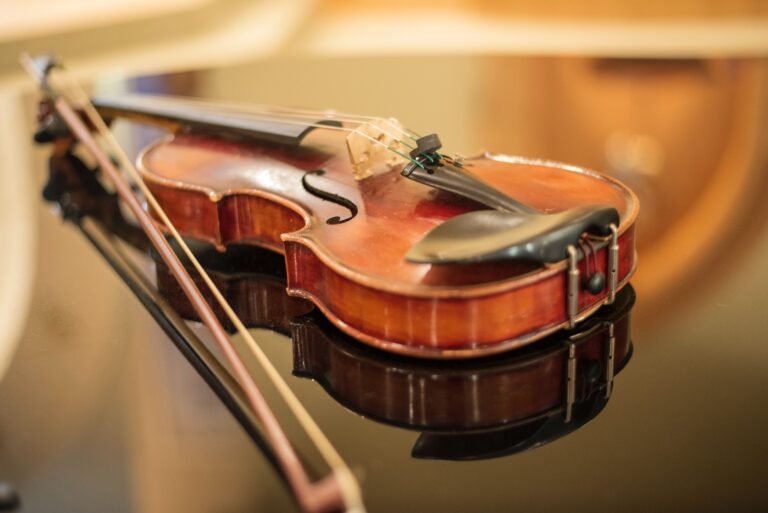A violin is a delicate and complex instrument, and even the slightest damage can affect its appearance and sound. Whether it has been dropped, exposed to extreme weather, or suffered from years of use, restoring a damaged violin requires a careful, methodical approach. Violin maker restoration services are essential to ensure that a violin is repaired in a way that maintains its functionality, aesthetics, and value.
Restoring a violin involves several steps, each requiring specific expertise. From assessing the damage to selecting the right materials and applying the correct techniques, a professional violin maker can bring a damaged instrument back to life. In this article, we’ll explore the key steps involved in the restoration of a violin and why it’s important to rely on an experienced specialist.
Step 1: Assessment of Damage
The first step in restoring a damaged violin is to assess the extent of the damage. This initial evaluation helps the violin maker understand the structural and cosmetic issues that need to be addressed. The expert will closely examine the violin to identify any cracks, splits, worn-out areas, or other forms of damage.
A careful inspection of the violin’s body, neck, fingerboard, bridge, and other critical components is essential. A specialist will also consider the type of wood, varnish, and any unique markings or features that could affect the restoration process. This step is crucial because it determines which restoration methods and materials should be used. Violin maker restoration services ensure that the expert fully understands the instrument’s condition before moving forward with repairs.
Step 2: Disassembly and Cleaning
Once the damage has been assessed, the violin maker will carefully disassemble the instrument to prepare it for repair. This includes removing the strings, bridge, fingerboard, and any other components that can be detached. Each part of the violin is handled with extreme care to prevent further damage.
The disassembly process also includes cleaning the violin thoroughly. Over time, dirt, rosin buildup, and old varnish can accumulate on the instrument, affecting both its appearance and sound. Specialized cleaning methods are used to remove any residue without damaging the violin’s delicate surface. This cleaning process is important because it ensures that the violin is restored to its original state, allowing the repair work to be performed on a clean, smooth surface.
Step 3: Repairing Structural Damage
One of the most critical steps in restoring a damaged violin is repairing any structural issues, such as cracks, splits, or broken parts. These damages can occur in various places on the violin, including the body, neck, or scroll. The violin maker must address these issues using specialized techniques that will not only restore the violin’s strength but also preserve its sound quality.
For instance, when repairing cracks, the violin maker carefully opens the crack and cleans both sides to ensure a strong bond. The crack is then glued with a special adhesive that’s designed for wooden instruments. After the glue has set, the repair area is carefully sanded and reshaped to match the rest of the instrument. The repair work needs to be done seamlessly to maintain the integrity of the violin’s soundboard and overall tone.
If any other components, such as the neck or fingerboard, need to be replaced or repaired, the violin maker will use high-quality wood that matches the original material. This ensures that the violin maintains its original acoustic properties.
Step 4: Restoring the Finish
After the structural repairs have been made, the next step is to restore the violin’s finish. Over time, the varnish can become scratched, worn, or faded. For a violin, the varnish is not only important for aesthetic reasons but also plays a role in its acoustics. The varnish affects the sound production, so it’s essential to restore it properly.
The violin maker will carefully strip away any old varnish, paying attention not to damage the underlying wood. The new varnish is then applied in thin layers, allowing each layer to dry before applying the next. This process ensures that the violin has a smooth, even finish that not only looks beautiful but also helps maintain the tonal quality of the instrument.
Choosing the right varnish is critical. The violin maker will select a varnish that is suitable for the violin’s age and style, matching the original finish as closely as possible. The final result is a violin that looks as good as new while retaining its authentic character.
Step 5: Reassembly and Adjustments
Once the structural repairs and finish restoration are complete, the violin is carefully reassembled. The bridge, fingerboard, pegs, and other components are reattached, and the strings are replaced. The violin maker will also make any necessary adjustments to the instrument, including tuning the bridge and fine-tuning the sound post to ensure that the violin plays at its best.
The reassembly process may involve several fine-tuning steps to adjust the action, string height, and sound post. These adjustments are crucial for the instrument’s playability and sound quality. A well-restored violin not only looks beautiful but should also perform at its best.
Conclusion:
Restoring a damaged violin requires specialized knowledge, skill, and experience. A violin maker restoration services expert can bring an instrument back to life by carefully following a series of steps, from assessing the damage to making structural repairs and restoring the finish. By choosing a professional, you ensure that your violin is restored properly and remains a valuable asset, both in terms of its sound and its aesthetic qualities.
The restoration process is not just about repairing the damage—it’s about preserving the violin’s tone, appearance, and historical value. Whether the violin is a family heirloom, a rare vintage instrument, or a professional tool, trusting a specialist guarantees that the restoration will enhance the violin’s longevity and maintain its integrity. So, when faced with a damaged violin, opting for expert restoration services is the best choice for preserving both the instrument’s beauty and functionality for years to come.



